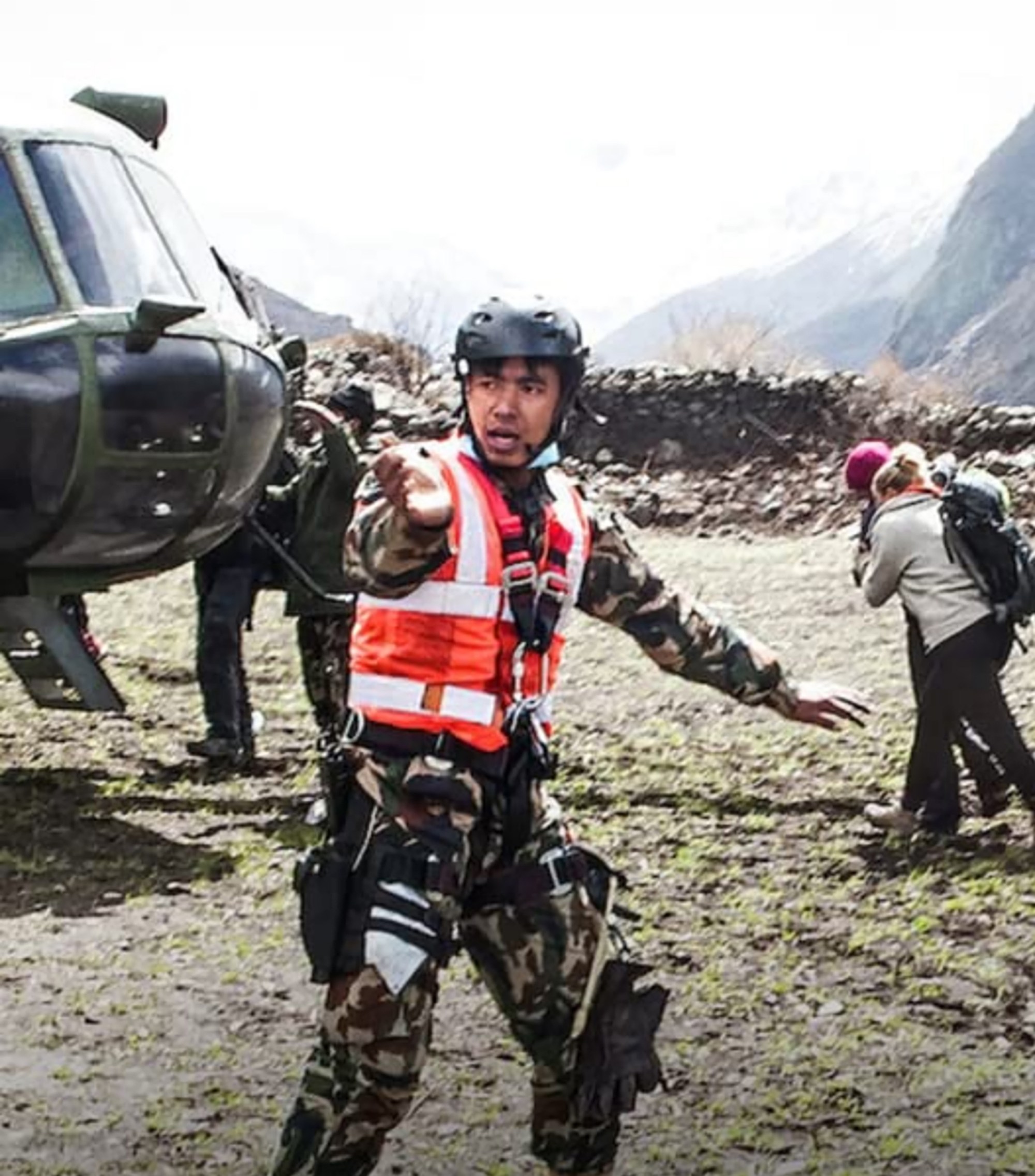
- Film
Docs: “Aftershock: Everest and the Nepal Earthquake’s” Harrowing Stories
From climbers stuck on Mount Everest to citizens trapped underneath the rubble in Kathmandu, Aftershock: Everest and the Nepal Earthquake shows what it was like to experience the deadly 2015 natural disaster from different locations and perspectives. The new three-part Netflix documentary centers around 25 survivors who share their harrowing stories through sit-down interviews and personal footage.
There are people who spend their entire lives dreaming about summiting the highest mountain peaks in the world, but the idea had never even remotely crossed UCLA student Sara’s mind. That was until her professor told her that she was too shy and that she needed to work on her self-confidence by getting out of her comfort zone. When she overheard a classmate talking about Everest Base Camp, she knew exactly what to do. “I really wanted to be there,” she said during her initial interview for the docuseries. “I was so excited about Everest that I went home and googled ‘how to climb Everest.’” Her interview sets the tone for the first episode that’s titled “Wrong Place Wrong Time.”
The Iranian native was just about to pass Khumbu Icefall, a treacherous place that is often referenced as the most dangerous part of Everest when a 7.8 magnitude earthquake struck. As she was getting ready to unclip herself to get off the fifth ladder, a loud deep rumble emerged. “I couldn’t breathe. I was really gasping for air. I thought this is it. I’m going to die.” Nearly 9,000 people lost their lives that day.
Langtang Village, miles west of Everest, was one of the hardest-hit regions due to the massive landslide that was triggered by the earthquake. Not knowing that the town had been completely wiped out, three Israeli trekkers Yaar, Shahar and Yuval, decided to head out that way in the hopes of finding shelter and food. Shahar recounted the moment he looked down from a hill and laid eyes on the ruins. “There was nothing there. I didn’t even see a single roof,” he said.
Meanwhile, in Kathmandu, rescue crews were racing against the clock to find survivors among the wreckage.
Arjun, a hotel owner who happened to be out of town that day, was lighting a lamp in Shiva’s temple when the earthquake hit. “I was actually having a great time,” he chuckled. It was his mother who told him there had been an earthquake and she had instructed him to go straight back to Kathmandu. “Suddenly, I had a bad feeling about my hotel. I thought, my hotel is really big and my wife Sangeeta hasn’t called me yet.”
One snippet shows how a mountaineer named Pat tried to continue to the summit after the earthquake. “I don’t suffer from guilt,” he said without hesitation. “The contemporary pressures are for us to all feel guilty that we have any type of privilege, that we should all be apologetic for what we have. But I don’t feel that way. I spent a lot of time looking at every insurance option and I paid for the best. I have a lot to live for.”
In an interview with Outside Magazine, director Olly Lambert revealed how his team had countless conversations about how much attention they should give to each storyline. “Literally, from Day One of the production, the question we asked was how can we ensure that this huge disaster taking place in the Indian subcontinent is not framed as a load of white people bleating about their holiday going wrong.”
“Yes, the series we’ve made is about an earthquake,” Lambert continued. “But it’s really about these people, how they were changed and how they were revealed by their actions and behaviors. Something inside of them came out.”

